24 Popular Filipino Meat Dishes That Burst With Flavor
Filipino cuisine boasts a tantalizing array of meat dishes that reflect the country's rich culinary heritage.
Regional influences and diverse cooking techniques transform simple ingredients into extraordinary meals.
Vibrant flavors dance across plates, telling stories of cultural connections and family traditions.
Meat plays a central role in Filipino dining, representing comfort, celebration, and social bonding.
Generations have perfected recipes passed down through intimate kitchen gatherings and shared meals.
Bold spices, unique marinades, and innovative cooking methods elevate these dishes beyond ordinary preparations.
Each recipe carries a distinct personality, blending indigenous practices with international culinary influences.
Hungry food enthusiasts will find incredible variety in these 24 popular Filipino meat dishes:
Popular Filipino Meat Dishes That Steal the Show
Filipino kitchens offer a flavorful array of meat dishes, slow-cooked, grilled, or stewed. Expect bold sauces, tangy dips, and comfort with every bite.
Inasal Na Manok
Inasal na manok are tantalizing Filipino grilled chicken specialties originating from Western Visayas, transforming simple poultry into a flavor-packed regional culinary icon.
Chicken cuts marinate in a vibrant blend of vinegar, lemongrass, garlic, and ginger before grilling over hot flames.
Annatto-infused oil brushed during cooking creates a golden exterior with distinctive peppery notes.
Chefs carefully grill the meat to achieve perfect charred edges and juicy interior.
Spiced vinegar accompanies the chicken, enhancing its complex taste profile.
Annatto-flavored garlic rice completes the traditional serving presentation.
Bacolod city officially recognized inasal na manok as an important cultural property in 2022.
Lechon
Lechon embodies Philippine culinary mastery through its whole roasted pig preparation, traditionally slow-cooked on a bamboo spit over open fire with aromatic herbs like lemongrass, tamarind, garlic, onions, and chives.
Filipino families and communities celebrate special occasions like weddings and Christmas by presenting this spectacular roasted dish, which features a crispy, reddish-brown skin prized by everyone.
Derived from Spanish terminology, this iconic meal involves carefully preparing a suckling pig that becomes tender and flavorful during hours of careful roasting.
Guests typically enjoy every part of the pig, from succulent meat to crackling skin, making it a centerpiece of festive gatherings.
Professional preparation requires significant skill and hours of patient cooking over traditional wood fires.
Regional variations exist across Philippine islands, with each area adding unique seasoning touches.
Roasting techniques pass through generations, maintaining authentic cooking methods.
Lechon represents more than food - it symbolizes Filipino hospitality and cultural connection.
Lechon Kawali
Lechon kawali embodies crispy pork perfection, featuring deep-fried pork belly that transforms simple ingredients into a Filipino culinary masterpiece.
Filipino families treasure this dish for its irresistible golden-brown exterior and succulent interior meat.
Chefs first boil pork belly in seasoned water, then meticulously season and deep-fry the chunks until they achieve a crackling skin.
Salt plays a crucial role in developing the meat's rich flavor profile.
Vinegar sauce typically accompanies the dish, adding a tangy counterpoint to the rich pork.
Restaurants and home kitchens across the Philippines serve this beloved dish hot and fresh.
Diners crack through the crispy skin to enjoy the tender meat underneath.
Regional variations exist, but the core preparation remains consistent throughout the country.
Bicol Express
Bicol express electrifies Filipino cuisine with its fiery coconut-cream sauce packed with sliced pork and intense chili peppers.
Manila restaurant owner Cely Kalaw crafted this legendary dish as a spicy twist on traditional Bicolano coconut recipes.
Shrimp paste adds deep umami complexity to the creamy sauce, creating a bold flavor profile that challenges taste buds.
Named after the train route connecting Manila to Bicol region, this dish quickly became a national favorite.
Chili peppers provide a scorching heat that distinguishes it from milder Philippine meals.
Restaurants and home kitchens across the Philippines prepare this signature plate with regional variations.
Coconut cream softens the pepper's intense burn, balancing the dish's explosive flavors.
Steamed white rice traditionally accompanies Bicol express, helping diners manage its powerful spiciness.
Sisig
Sisig are sizzling chopped pig parts from head and face transformed into a spicy Filipino street food specialty that originated in Pampanga province.
Grilled and seasoned with vinegar, salt, and pepper, the dish blends crispy pig ears, cheeks, and jowls with fried onions and chicken liver.
Historically traced back to a 1732 dictionary definition as a green papaya salad, sisig evolved into a meaty delicacy served with a raw egg on top.
Mayonnaise and pork cracklings often enhance its rich flavor profile.
Restaurant versions range from traditional preparation to modern interpretations using different meat cuts.
Street vendors and restaurants nationwide serve this iconic Philippine dish.
Regional variations reflect local taste preferences and cooking techniques.
Culinary experts consider sisig a prime example of Filipino resourceful cooking.
Tapa (Philippines)
Tapa represents a beloved Filipino beef dish marinated in a zesty blend of calamansi, soy sauce, sugar, and garlic, traditionally sliced from sirloin and grilled or pan-fried to perfection.
Filipino cuisine embraces this versatile protein, which can also feature mutton, venison, wild boar, horse, deer, or carabao meat.
Originating as a preservation technique, tapa transforms simple ingredients into a flavorful meal that resonates with national culinary traditions.
Filipinos typically serve tapa as part of tapsilog, a popular breakfast combination featuring the marinated meat alongside garlic fried rice and eggs.
Regional variations showcase different marinades and preparation methods, reflecting local taste preferences.
Restaurants and home kitchens across the Philippines celebrate this dish for its rich flavors and cultural significance.
Street vendors and family kitchens often prepare tapa using time-honored techniques passed through generations.
Inihaw Na Liempo
Inihaw na liempo ranks as a beloved Filipino grilled pork belly dish featuring succulent meat marinated in a zesty blend of soy sauce, lemon juice, salt, pepper, and garlic.
Filipino grill masters carefully baste the pork with a mixture of leftover marinade, banana ketchup, and oil during cooking to enhance its rich flavor profile.
Charcoal grilling creates a smoky exterior that seals in the meat's juiciness and develops a tantalizing caramelized crust.
Regional variations exist across different Philippine provinces, each adding unique twists to the traditional preparation.
Small family gatherings and large celebrations often feature this protein-packed dish as a centerpiece.
Grilling techniques passed through generations ensure the pork belly remains tender and flavorful.
Adobong Baboy
Adobong baboy is a rich Filipino pork stew simmered in a tangy, savory marinade of soy sauce and vinegar.
Pork belly transforms into a tender, flavorful dish through careful browning and slow cooking with garlic, bay leaves, and peppercorns.
Filipino families traditionally prepare this stew by marinating meat in garlic and soy sauce before intense pan-frying.
Sugar balances the sharp vinegar notes while creating a complex flavor profile unique to Philippine cuisine.
Salt enhances the meat's natural richness and helps develop deep caramelization during cooking.
High heat ensures the pork achieves a beautiful golden-brown exterior before liquid ingredients are added.
Simmering allows the sauce to thicken and coat each piece of meat perfectly.
White rice serves as an ideal accompaniment, soaking up the dish's robust, umami-packed sauce.
Tocino
Filipino tocino are sweet-cured meat slices marinated in a complex blend of sugar, salt, and tropical juices that transform ordinary pork into a caramelized delicacy.
Spanish-influenced Filipino cuisine developed this specialty meat by infusing pork with unique seasonings like rice wine vinegar and soy sauce.
Saltpeter and annatto seeds enhance preservation and add distinctive reddish color to the meat.
Traditionally prepared with pork, occasional beef or chicken variations exist.
Cooks carefully marinate meat slices in a combination of spices and sweet ingredients.
Light pan-frying creates a golden caramelized exterior that seals in rich flavors.
Garlic fried rice and sunny side up eggs complete this classic Filipino breakfast dish.
Regional variations reflect local taste preferences and family recipes.
Morcon
Morcon are succulent Filipino meat rolls packed with a colorful medley of ingredients that symbolize festive celebrations.
Filipino families carefully roll thin meat slices around hard-boiled eggs, sausages, and crisp vegetables like carrots and pickles.
These hearty rolls get braised until tender and juicy, creating a rich flavor profile that makes them a staple during special occasions.
New Year's Day celebrations especially highlight morcon, as Filipinos believe round-shaped foods promise prosperity for the coming year.
Savory sauces made from tomatoes or soy typically accompany the sliced rolls, enhancing their robust taste.
Traditional preparation requires meticulous arrangement of ingredients inside the meat wrapper.
Regional variations exist across different Philippine provinces, with some families adding unique personal touches.
Skilled home cooks pass down morcon recipes through generations, preserving this beloved culinary tradition.
Adobong Manok
Adobong manok is a signature Filipino chicken stew marinated in a complex blend of soy sauce and white vinegar that creates a tangy, savory flavor profile distinctive to Philippine cuisine.
Philippine home kitchens prepare this dish by combining chicken pieces with garlic, onions, bay leaves, and peppercorns in a flavorful marinade.
Soy sauce and vinegar form the core seasoning that tenderizes the meat and infuses deep umami notes.
Brown sugar balances the sharp vinegar with a subtle sweetness.
Cooks typically brown the marinated chicken in oil before simmering to develop rich caramelized edges.
Regional variations might include additional spices or ingredients depending on family traditions.
Cooking techniques ensure each piece absorbs maximum flavor while maintaining juicy meat texture.
Served with steamed rice, adobong manok represents a classic comfort meal enjoyed throughout Philippine households.
Kaldereta
Kaldereta is a bold Filipino meat stew celebrating rich Spanish culinary heritage through its complex flavor profile and tender meat preparation.
Spanish colonial influences shaped this robust dish during three centuries of cultural exchange in the Philippines.
Beef and goat serve as primary meat selections for creating the signature protein base.
Mashed liver adds depth and intensity to the stew's remarkable sauce.
Tomato sauce provides a tangy foundation that melds with traditional seasonings like onions, garlic, salt, and pepper.
White rice traditionally accompanies this hearty stew, offering a perfect complementary side dish.
Filipino families often prepare kaldereta during special gatherings and celebrations, making it a beloved national recipe.
Pinakbet
Pinakbet is a powerful Filipino vegetable stew brimming with native ingredients that showcase northern Philippine culinary traditions.
Native Ilocos region farmers originally crafted this dish as a resourceful way to combine multiple garden vegetables with protein-rich meat.
Fatty pork serves as the primary protein, complemented by bitter melon, squash, sweet potatoes, eggplants, okra, and green beans.
Bagoong, a fermented shrimp paste, provides intense umami flavor and transforms simple ingredients into a complex dish.
Regional variations exist across different Philippine provinces, with some versions using seafood instead of pork.
Salt and pepper enhance the natural flavors of fresh produce.
Slow cooking allows vegetables to meld together while maintaining their individual characteristics.
Pares
Pares exemplifies Filipino street food mastery through a hearty beef stew traditionally served with rice and savory soup.
Slow-braised beef chunks absorb a complex flavor profile from garlic, soy sauce, star anise, and subtle sweeteners during careful cooking.
Tender meat swimming in thick, rich sauce defines this beloved street staple across urban Philippines.
Beef stock accompanies the main stew, creating a complete meal experience that satisfies hunger and cultural comfort.
Its name derives from Filipino words meaning "pairs," highlighting the intentional combination of stew, rice, and soup.
Street food culture embraces pares as an affordable, filling meal for workers and families.
Fragrant spices and careful preparation transform simple ingredients into a deeply satisfying dining experience.
Binagoongan
Binagoongan is a savory Filipino dish featuring meat or protein cooked in intensely flavorful shrimp paste, creating a bold and umami-rich culinary experience.
Pork belly serves as the most traditional protein, though beef, chicken, and even vegetables like water spinach can replace the meat.
Shrimp paste forms the dish's signature flavor profile, lending a complex saltiness that transforms simple ingredients into an extraordinary meal.
Regional variations incorporate additional ingredients like bay leaves, peppercorns, garlic, and chili peppers to enhance the taste.
Eggplant and pineapple chunks sometimes add sweetness and texture to the preparation.
Cooking methods typically involve sautéing or braising the protein with the shrimp paste until tender and well-seasoned.
Originating from Philippine cuisine, binagoongan reflects the country's love for intense, salty-sweet flavor combinations.
Filipino families enjoy this dish as a hearty main course served with steamed rice.
Crispy Pata
Crispy pata represents a beloved Filipino deep-fried pork dish featuring a whole pig's leg transformed into a golden, crunchy masterpiece.
Filipino families celebrate special events with this rich culinary treasure that combines tender meat and crackling skin.
Chefs carefully boil the pork leg with aromatic spices like bay leaves and peppercorns to infuse deep flavor before the critical frying stage.
Traditional preparation involves boiling the meat until completely tender, then air-drying to ensure maximum crispiness.
Skilled cooks deep-fry the leg at high temperatures to create a perfect exterior crunch that contrasts with succulent interior meat.
Restaurant menus and home kitchens across Philippines showcase this iconic dish as a centerpiece of festive gatherings.
Diners typically enjoy crispy pata with vinegar-based dipping sauce that cuts through the meat's richness.
Regional variations exist, but the core technique of achieving extraordinary crisp remains consistent throughout Filipino cuisine.
Bistek Tagalog
Bistek Tagalog is a beloved Filipino beef dish featuring thinly sliced meat tenderized in a zesty marinade of citrus, soy sauce, and aromatics.
Spanish culinary influences shaped this iconic recipe during colonial periods in the Philippines.
Calamansi or lime juice provides a signature tangy brightness to the savory preparation.
Tender beef cuts like sirloin or top round create the perfect texture for quick braising.
Sliced onions caramelize alongside the meat, adding depth and sweetness to each bite.
Garlic and black pepper enhance the complex flavor profile of this national favorite.
Traditional preparation ensures maximum flavor by marinating beef before quick pan-cooking to preserve juiciness.
Mechado
Mechado is a savory Filipino beef stew blending Spanish culinary influences with local ingredients through tender meat slow-cooked in rich tomato sauce.
Spanish colonization introduced tomato-based cooking techniques that transformed traditional Filipino meat preparations.
Cooks typically use affordable beef cuts and insert pork fat strips called mecha, which resemble candle wicks and inspired the dish's name.
Potatoes, bell peppers, carrots, and peas often accompany the meat for added texture and nutrition.
Soy sauce and fish sauce provide depth and umami flavor to the sauce.
Regional variations exist across different Philippine islands, with some families using pork instead of beef.
Each version reflects local tastes and cooking traditions while maintaining the dish's core Spanish-Filipino fusion identity.
Chicksilog
Chicksilog represents Filipino breakfast perfection with crispy fried chicken paired alongside sunny-side-up eggs and garlic-infused rice.
Filipino households start mornings with this protein-packed meal that delivers satisfying flavor and quick energy.
Street vendors and home kitchens across Philippines prepare this popular silog variation using simple ingredients and traditional cooking methods.
Restaurant menus frequently feature chicksilog as a hearty morning option for workers and students.
Chicken gets seasoned with salt and pepper before frying to golden brown crispiness.
Garlic rice provides an aromatic base for the protein-rich dish.
Eggs cook quickly in hot oil until whites are set and yolks remain slightly runny.
Filipinos enjoy this complete meal as a quick and filling breakfast solution that balances nutrition and taste.
Afritada
Afritada represents a classic Filipino stew bursting with savory tomato sauce and tender meat that highlights Spanish culinary influences in Philippine cuisine.
Filipinos traditionally prepare this hearty dish using chicken or pork as the primary protein, carefully simmered with potatoes, bell peppers, and carrots.
Spanish colonial cooking techniques shaped afritada's unique flavor profile and cooking method.
Regional variations exist across different Philippine islands, allowing families to customize the recipe with local ingredients.
Salt and pepper provide additional seasoning that complements the tangy tomato base.
Vegetables like green peas occasionally add extra texture and color to the dish.
Serving afritada with steamed white rice transforms it into a complete and satisfying meal that connects generations through shared culinary traditions.
Pata Tim
Pata tim showcases Filipino-Chinese cuisine through its succulent braised pork leg, slow-cooked to melt-in-your-mouth tenderness with aromatic spices and a glossy sweet-savory sauce.
Filipino families treasure this hearty dish as a weekend centerpiece, traditionally prepared by gently simmering pork leg with soy sauce, star anise, and peppercorns.
Shiitake mushrooms and bok choy add depth and nutritional balance to the rich meat preparation.
Brown sugar creates a subtle caramelized glaze that elevates the complex flavor profile.
Sesame oil provides a nutty undertone that complements the tender protein.
Cornstarch helps thicken the sauce, ensuring a smooth and glossy finish.
Regional variations exist, but the core technique remains consistent across Filipino households.
Bola-Bola
Termbola-bola are Filipino meatballs packed with robust flavors and cultural significance.
Ground beef or pork forms the base of these savory spheres, blended with aromatic garlic, chopped onions, and eggs for perfect texture.
Soy sauce and a mix of spices elevate the meat mixture, creating a complex taste profile unique to Filipino cuisine.
Filipinos enjoy these meatballs in multiple ways, from standalone appetizers to integral soup ingredients.
Street vendors and home cooks prepare termbola-bola as quick, satisfying snacks that appeal to all ages.
Traditional recipes often include breadcrumbs for added consistency and binding.
Restaurants across Philippines serve these meatballs as popular street food and casual dining options.
Family gatherings frequently feature termbola-bola as a crowd-pleasing protein dish that connects generations through shared culinary traditions.
Adobong Baka
Adobong baka represents a savory Filipino beef stew marinated in a complex blend of soy sauce, vinegar, and aromatic spices.
Filipino kitchens treasure this slow-cooked dish for its deep, rich flavors and tender meat texture.
Sliced beef absorbs a marinade of garlic, bay leaves, peppercorns, and brown sugar before braising.
Soy sauce and vinegar create a signature tangy base that tenderizes the meat during cooking.
Traditional preparation involves simmering the marinated beef until it becomes fork-tender and deeply infused with spices.
Families across the Philippines enjoy this hearty meal as a comforting staple during gatherings and everyday meals.
Regional variations might include additional ingredients like coconut milk or different meat cuts.
Each serving offers a perfect balance of salty, sour, and slightly sweet flavors characteristic of authentic Filipino cuisine.
Talunan
Talunan are succulent Filipino chicken pieces simmered in a tangy vinegar-based broth with deep historical roots in cockfighting traditions.
Originating from a term meaning "defeated," this unique dish traditionally used roosters that lost brutal fighting matches.
Garlic, ginger, and complex spices infuse the chicken with rich, intense flavors characteristic of Philippine cuisine.
Each ingredient contributes to a robust and slightly sour profile that distinguishes talunan from other regional chicken preparations.
Filipino families have long prepared this dish as a practical way to utilize roosters after cockfighting events.
Regional variations might include different vinegar types or additional spices depending on local preferences.
Small villages and rural communities continue to maintain this culinary practice as a connection to traditional food preparation methods.
Fresh ingredients and slow cooking transform simple chicken into a memorable meal reflecting Philippine cultural heritage.
How Is the Method of ‘Adobo-Style Braising’ Different From Other Types of Stews?
Adobo-style braising is a distinctive cooking technique popular in Filipino cuisine, setting itself apart from other stewing methods through its unique flavor profile and preparation:
This method emphasizes bold, layered flavors with a balance of sour, salty, and aromatic notes that distinguish it from other stew styles.
What Preparation Method Gives Lechon Its Crispy Skin and Moist Interior?
Lechon, the celebrated Filipino roasted pig, owes its irresistible crispy skin and juicy meat to careful preparation and cooking techniques:
This careful balance of drying, slow roasting, and finishing gives lechon its hallmark crispy exterior paired with tender, juicy interior.


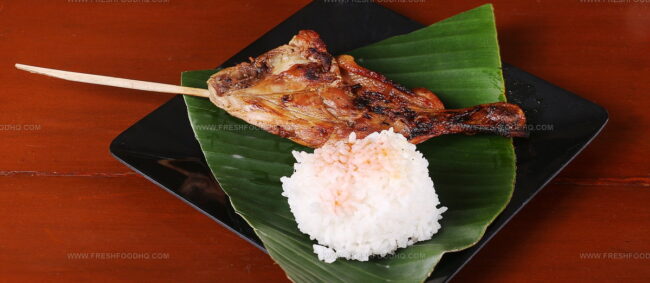

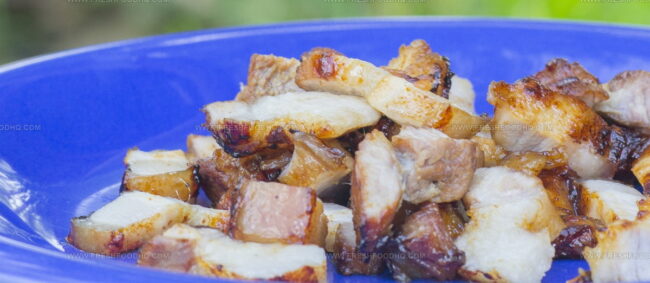

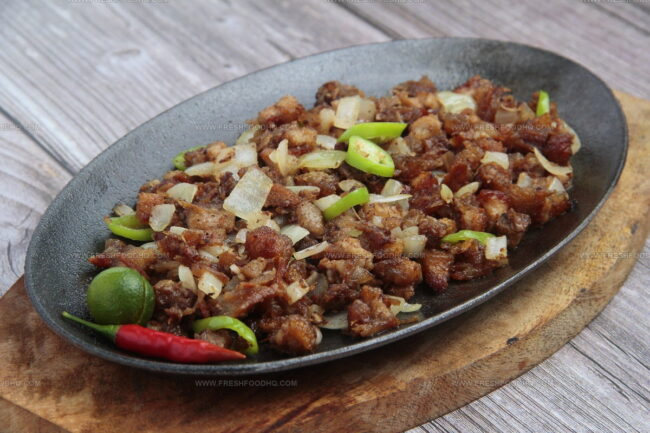
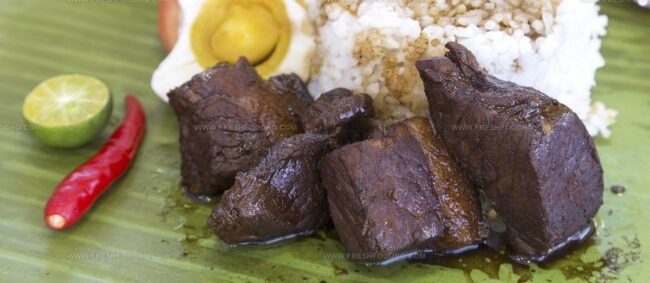

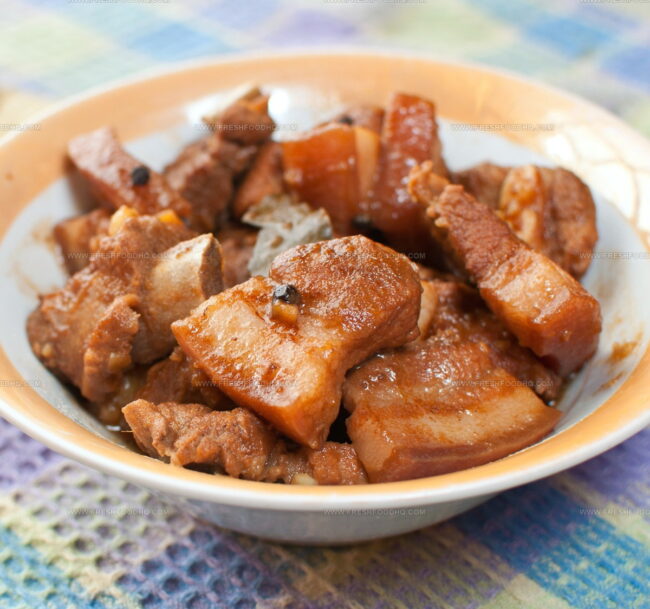


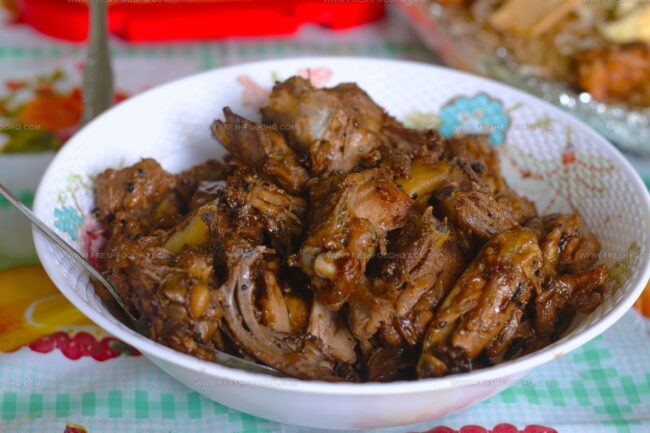
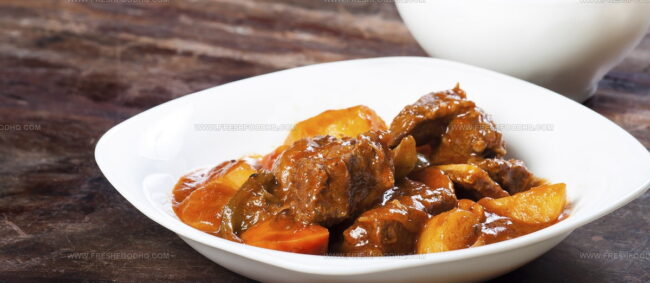

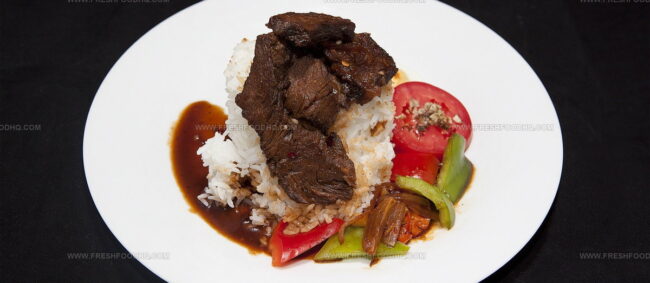
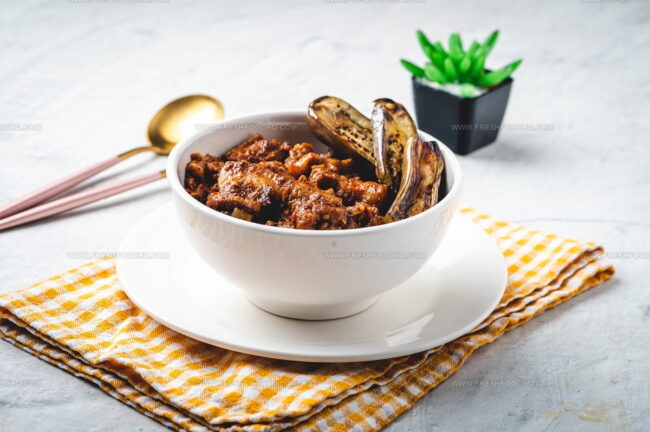
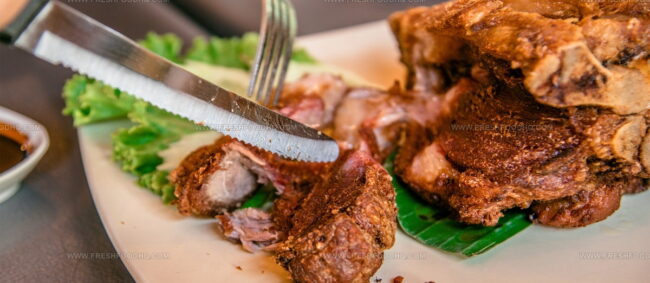
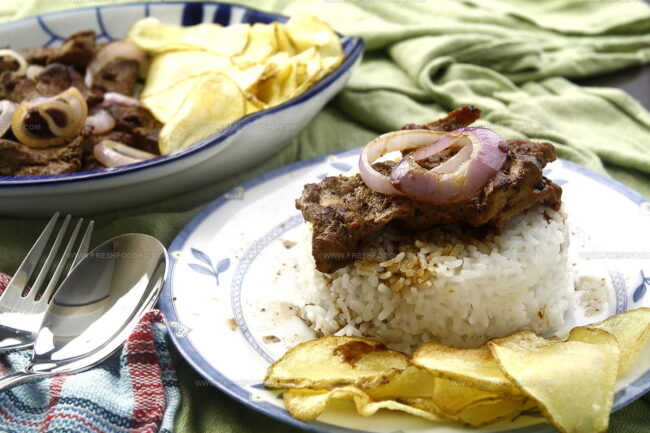
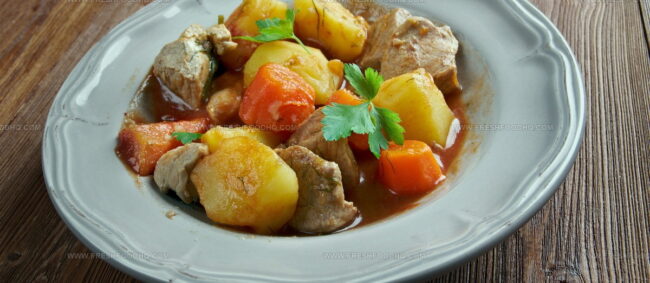

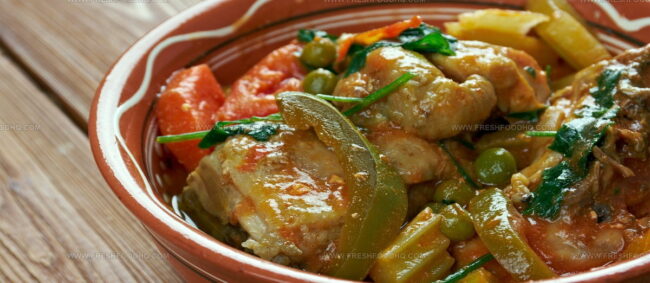
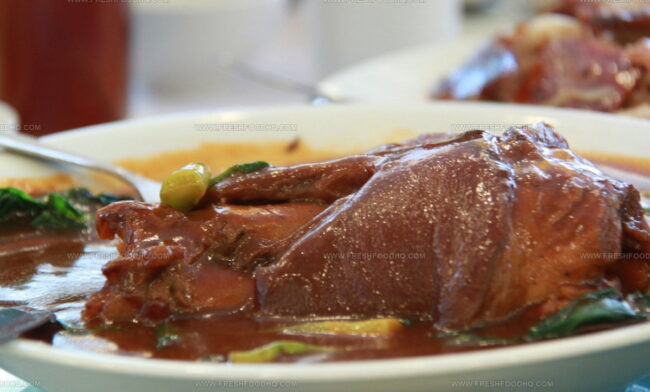

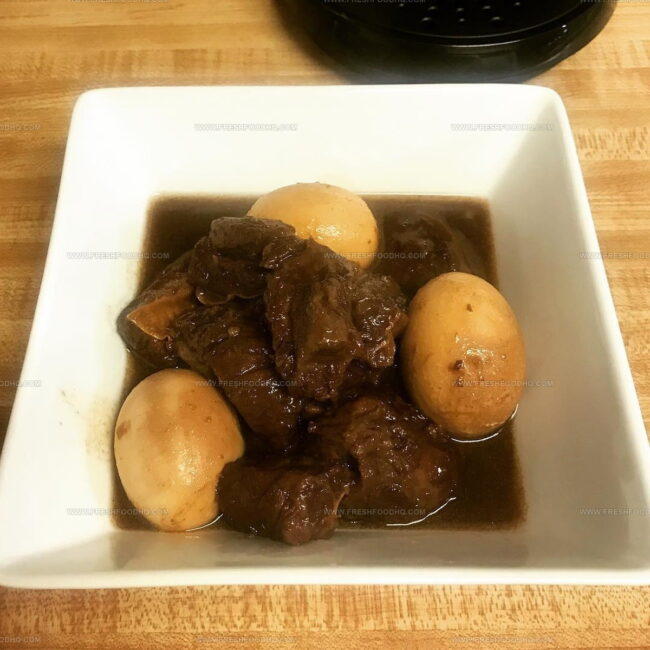
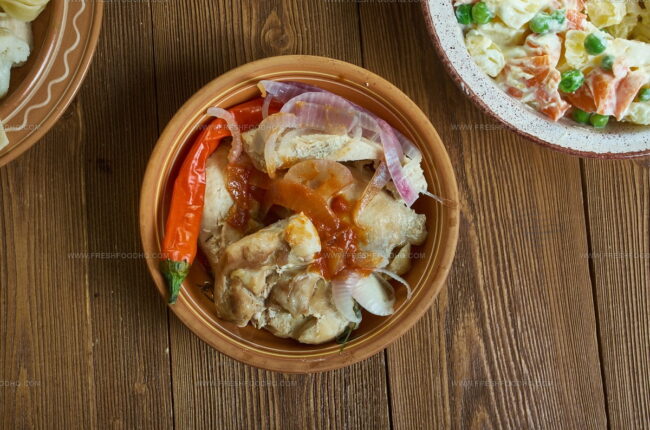
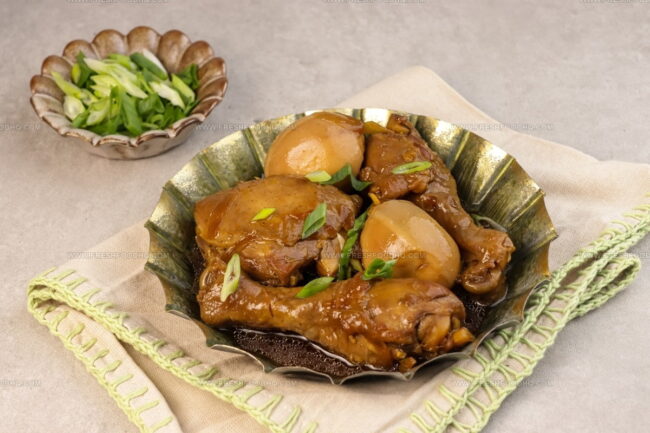
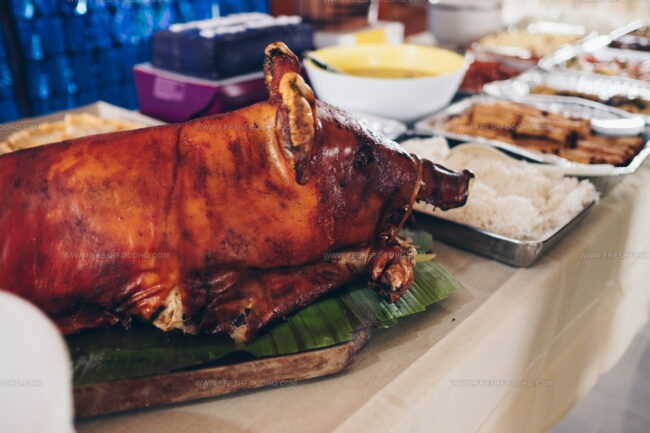
Ethan Caldwell
Founder & Culinary Innovator
Expertise
Farm-to-table cooking, Seasonal recipe creation, Culinary storytelling, Food photography and styling
Education
The Chef’s Academy (Indianapolis, IN)
Ethan didn’t just fall in love with food, he grew into it, surrounded by fields, farmers’ markets, and family meals that told a story.
After sharpening his skills at The Chef’s Academy, he took his passion straight into the farm-to-table movement, working side-by-side with local growers and seasonal flavors.
He believes every recipe should feel like a walk through a summer market: colorful, fresh, and full of possibility.
Outside the kitchen, Ethan’s idea of a perfect day is hiking mountain trails, digging into heirloom vegetables, and hosting casual dinners where seconds are always encouraged.